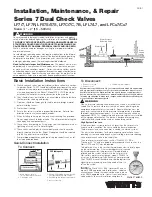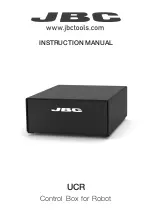
3
Reverse pulse & direction
12
Reversed pulse & direction
For example, to configure the main encoder for reversed quadrature, m=2, and a second encoder
of pulse and direction, n=4, the total is 6, and the command for the X axis is
CE
6
Additional Commands for the Auxiliary Encoder
The command, DE x,y,z,w, can be used to define the position of the auxiliary encoders. For
example,
DE
0,500,-30,300
sets their initial values.
The positions of the auxiliary encoders may be interrogated with the command, DE?. For example
DE
?,,?
returns the value of the X and Z auxiliary encoders.
The auxiliary encoder position may be assigned to variables with the instructions
V1=
_DEX
The command, TD XYZW, returns the current position of the auxiliary encoder.
The command, DV XYZW, configures the auxiliary encoder to be used for backlash
compensation.
Backlash Compensation
There are two methods for backlash compensation using the auxiliary encoders:
1.
7Continuous dual loop
2.
Sampled dual loop
To illustrate the problem, consider a situation in which the coupling between the motor and the
load has a backlash. To compensate for the backlash, position encoders are mounted on both the
motor and the load.
The continuous dual loop combines the two feedback signals to achieve stability. This method
requires careful system tuning, and depends on the magnitude of the backlash. However, once
successful, this method compensates for the backlash continuously.
The second method, the sampled dual loop, reads the load encoder only at the end point and
performs a correction. This method is independent of the size of the backlash. However, it is
effective only in point-to-point motion systems which require position accuracy only at the
endpoint.
Continuous Dual Loop - Example
Connect the load encoder to the main encoder port and connect the motor encoder to the dual
encoder port. The dual loop method splits the filter function between the two encoders. It applies
108
•
Chapter 6 Programming Motion
DMC-1600
















































